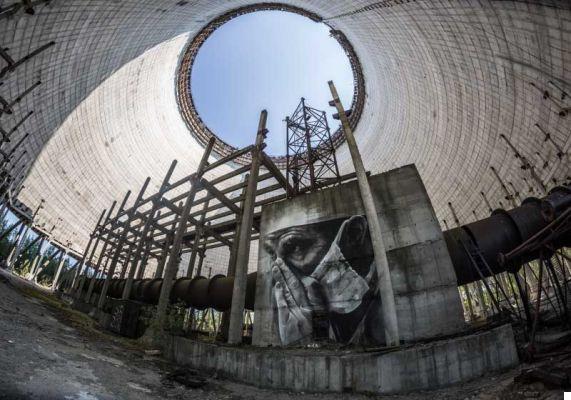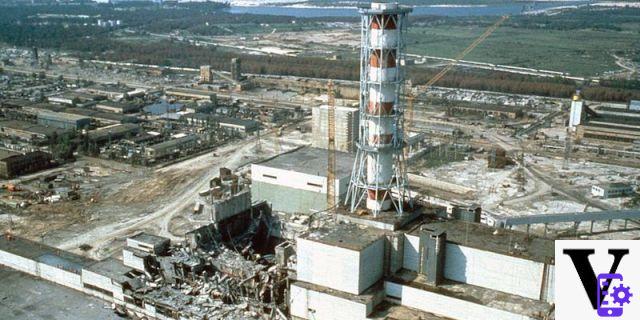Scientists have detected an increase in nuclear fission reactions in Chernobyl's reactor 4.
Let's find out what happened and what concerns there may be for the future. And let's briefly review the facts of the largest nuclear accident in history.
Chernobyl reactor 4 has awakened
Thirty-five years after the explosion of the Ukrainian nuclear power plant, the Chernobyl reactor is once again a cause for concern. The control tools of the power plant recorded an increase in nuclear fission in reactor 4.
The news was given by Anatolii Doroshenko, of the Institute for the Safety Problems of Nuclear Power Plants (ISPNPP) in Kiev, during a conference on the decommissioning of the reactor. And it was then picked up by the specialist journal Science.
"The sensors are monitoring an increasing number of neutrons, a signal of fission," said Doroshenko.
"There are a lot of uncertainties," Maxim Saveliev of ISPNPP echoed him. "But we can't rule out the possibility of an accident." Saveliev then specified that "the number of neutrons is slowly increasing".
“It's like embers in a barbecue”: with this simple metaphor Neil Hyatt, chemist of nuclear materials at the University of Sheffield, explained in the article published by Science what is happening in Ukraine.
Reactor 4 and the SNC shield
Reactor 4, the same in which the tragic accident occurred in 1986, was covered in record time with a sort of "sarcophagus" of concrete and steel.
Further and stronger protection had been put in place with the New Safe Confinement (NSC), a shield built in four years, from 2015 to 2019.
The shield is 110 meters high, 165 long, 257 wide and weighs 36 thousand tons. Costing 1,5 billion euros and sponsored by forty-five countries, it was supposed to guarantee the protection of the reactor from radioactive leaks for one hundred years.
Today it appears that the masses of uranium buried under the NSC are still active and have started a fission reaction that has been increasing for four years.
E curiously, the reason for the activity could be the NCI itself. The shield, which keeps the radioactive materials of the plant safe, prevents rain from entering the remains of the plant. But water slows down the neutrons and increases their chances of hitting and splitting uranium nuclei. The hypothesis of the ISPNPP scientists is that somehow the decrease in the amount of water caused the neutrons to bounce more inside the radioactive material.

The risks
There is no danger of consequences comparable to the disaster of thirty-five years ago.
However, it is possible that if the fission reactions were to increase exponentially, the energy released would boil the water left around the molten fuel, and there would be the risk of an explosion.
The first consequence would be the collapse of the old "sarcophagus", now contained within the NSC. Though the greatest fear concerns the hypothesis of a release of highly radioactive dust, which could move within a radius of a few kilometers.
Only a possible fire of the graphite (part of the mass of the new shield) would create a mass of hot air that would displace the radioactive particles at high altitudes, projecting them even over long distances.
Furthermore, the hypothesis of underground explosions could facilitate the transport of radioactive material to the nearby Pripyat River, which flows into the Dnieper and then flows into the Black Sea.
The hypotheses of intervention
The radiation levels in reactor 4 exclude the possibility of installing sensors to monitor fission reactions. One possibility, according to ISPNPP experts, is to use robots capable of withstanding radiation to drill through debris mixed with nuclear fuel. The idea is to insert boron cylinders inside them, which would be able to absorb neutrons.

The accident of April 26, 1986
The report of an increase in nuclear fission reactions in Chernobyl reactor 4 occurs almost in conjunction with a sad recurrence.
It was in fact April 26, 1986 when the same reactor melted down during a failed safety test. Uranium fuel rods, zirconium liner, graphite control rods, and sand dumped on the core to try to put out the fire created a chain reaction that caused a tremendous explosion.
The radioactive cloud spread at great speed, also reaching Europe, Scandinavia and even the east coast of North America.
 Chernobyl 01:23:40. The true story of the nuclear disaster that ...
Chernobyl 01:23:40. The true story of the nuclear disaster that ...
- Leatherbarrow, Andrew (Author)
The consequences of the accident
The disaster caused about 50.000 victims, but a study by Greenpeace estimates that 6 million deaths can be traced back to the Chernobyl accident in the space of seventy years.
The explosion had a devastating impact on the technical-scientific credibility of the Soviet Union, as well as on the collective imagination. It was in the years of the Cold War and the so-called nuclear race. Many still had in their eyes the apocalyptic film The day after-the day after, released in 1983, which was a nuclear war.
But how much the Chernobyl accident has remained in everyone's memory, is demonstrated by the fact that only two years ago, in 2019, a very successful miniseries for HBO about the Ukrainian nuclear power plant was shot.




















![[Review] Samsung Powerbot VR7000: the robot vacuum cleaner from Star Wars](/images/posts/6bc44de38605b5c0fa12661febb1f8af-0.jpg)





